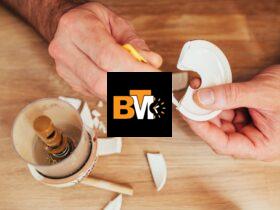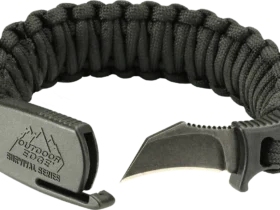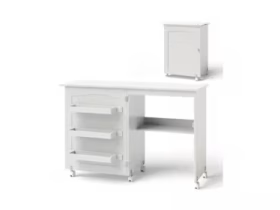Face fit testing is a critical safety measure in environments where respiratory protection is necessary. However, it’s prone to a variety of errors that can compromise the effectiveness of the protective gear and put users at risk.
This article explores the frequent mistakes made during face fit testing and provides practical solutions to ensure that each test is conducted properly, thereby maximising safety and compliance.
Common Mistakes in Face Fit Testing and Solutions to Prevent Them
- Not Using the Right Size of Mask
One of the simplest yet most overlooked aspects of face fit testing is selecting the correct mask size. It’s akin to finding the right shoe that fits: too big and you risk slipping; too small and you’re in for discomfort and potential injury. The same principle applies to masks. A mask that’s too large might allow hazardous particles to sneak in, while one too tight could be unbearable for long periods.
The solution is straightforward: Provide a variety of mask sizes during the testing phase, ensuring that each individual gets a mask that fits just right and offers optimal protection and comfort.
- Poor Understanding of How to Wear the Mask
It’s not uncommon to see a well-designed mask fail simply because it wasn’t worn correctly. This is similar to having a sophisticated security system at home but forgetting to activate it.
To prevent this, comprehensive training that covers everything from positioning the mask to adjusting the straps is crucial. Before any face fit test, conduct a detailed demonstration and allow participants to practice putting on and removing the mask under supervision. This ensures that when the time comes, they can achieve a perfect fit independently.
- Facial Hair Interfering with the Seal
Facial hair can be stylish, but it’s a formidable enemy of effective mask sealing. Any hair growth between the mask and the skin can prevent a tight seal, much like a door left slightly ajar.
The best approach here is to promote a clean-shaven policy on testing days or provide guidelines on acceptable facial hair that won’t compromise the mask’s efficacy. Educating workers about the risks associated with facial hair can encourage compliance and enhance safety.
- Incorrect Assembly of the Mask
A mask, no matter how well-made, will fail to protect if it’s incorrectly assembled. This mistake can be likened to incorrectly assembling a child’s car seat; the risks are significant.
To avoid this, it’s essential to train workers on each component of the mask—from the filters to the straps—and conduct a thorough pre-test review. Consider using a checklist that participants must complete before starting the test, ensuring every part is correctly assembled and functional.
- Skipping Pre-Test Checks
Skipping pre-test checks is like skipping a warm-up before a marathon—it prepares you and ensures everything is in working order. Implementing a mandatory checklist that covers everything from the integrity of the mask’s components to the proper fit and seal can prevent this oversight. This checklist should be treated as a critical procedure in the testing process, ensuring that nothing is missed and that all equipment meets safety standards.
- Tester Lacks Proper Training
The competence of the person conducting the face fit test is as crucial as the quality of the mask itself. Untrained testers can lead to unreliable results, much like an unqualified instructor in a classroom can hinder learning.
To remedy this, ensure that all testers have undergone face fit testing training and certification. Regular refresher courses can also help maintain high standards and up-to-date practices.
- Using Damaged or Inappropriate Testing Equipment
Testing with damaged or improper equipment is a recipe for failure, akin to measuring temperature with a broken thermometer. Regular maintenance checks, scheduled equipment reviews and immediate replacement of faulty parts are essential steps in ensuring that all testing equipment functions correctly. This proactive approach prevents the risk of faulty test results, which can lead to dangerous exposures.
- Not Considering Environmental Factors
Conducting tests in inappropriate conditions can skew results, much like taking a noise measurement at a rock concert. To ensure accuracy, perform face fit tests in environments that mimic actual working conditions as closely as possible, free from excessive wind, dust, or extreme temperatures. This controlled setting ensures that the mask’s performance is evaluated accurately, reflecting its effectiveness in the field.
- Reusing Disposable Masks for Testing
Using a disposable mask more than once is not just unhygienic; it compromises the integrity of the fit test. Each test should start with a fresh, new mask to ensure that the results are valid and that the mask performs as expected. This approach mirrors best practices in medical settings, where sterility and reliability are paramount.
- Not Documenting Test Results Properly
Proper documentation is the backbone of any systematic process. In face fit testing, failing to record results meticulously is like a scientist neglecting to note experiment parameters—it undermines the entire process. Detailed records should encompass the test date, the type of mask utilised, the test results and any observations or issues encountered. This documentation is crucial for compliance, future reference and continuous improvement in safety practices.
Face fit testing is not just a regulatory requirement but a fundamental aspect of maintaining a safe working environment.
Effective face fit testing enhances overall workplace safety, supports compliance with health and safety regulations, and underscores an employer’s commitment to safeguarding the well-being of their workforce. It is an indispensable practice that, when executed correctly, serves as a cornerstone for a health-conscious, safety-first workplace culture.







Leave a Reply